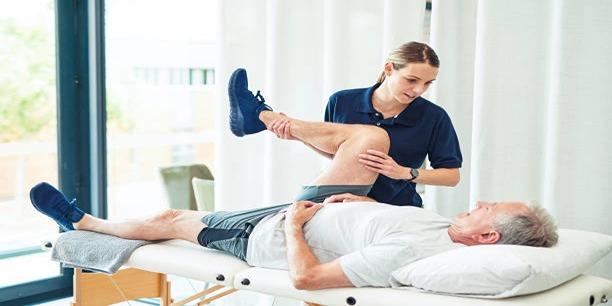Arthritis and knee joint pain are common ailments that can significantly impact one's quality of life, making everyday activities a challenge. While there is no one-size-fits-all solution, there are various methods available to help manage and alleviate the discomfort associated with these conditions. From lifestyle changes and physical therapies to natural remedies and medical treatments, understanding the options can empower you to find the most effective approach for your needs. This guide outlines seven practical methods to ease arthritis and knee joint pain, providing actionable steps that can help improve mobility and reduce pain. Whether you're seeking immediate relief or long-term management strategies, these methods aim to enhance your overall well-being and keep you moving with greater ease.
Exercise Regularly
Engaging in regular exercise is vital for alleviating arthritis and knee joint pain. It strengthens the muscles around the joints, improves flexibility, and reduces stiffness. Low-impact activities such as swimming, cycling, and walking are particularly beneficial. These exercises minimize stress on the joints while promoting overall cardiovascular health. Additionally, incorporating stretching and strengthening exercises can help maintain joint function and reduce pain. Programs like yoga and Pilates offer gentle ways to enhance flexibility and muscle tone. Its important to start slowly and gradually increase intensity to avoid overexertion. Consulting with a physical therapist can provide personalized exercise plans tailored to your specific needs and limitations, ensuring you get the most benefit without causing further harm to your joints.
Maintain a Healthy Weight
Maintaining a healthy weight is crucial for managing arthritis and knee joint pain. Excess weight can put additional stress on weight-bearing joints like the knees, exacerbating pain and potentially accelerating the degeneration of joint tissues. By adopting a balanced diet rich in nutrients, individuals can support overall joint health and facilitate weight management. Incorporating a variety of fruits, vegetables, whole grains, lean proteins, and healthy fats ensures that the body receives essential vitamins and minerals that can improve joint function and reduce inflammation.
In addition to dietary changes, regular physical activity plays a significant role in weight management. Engaging in both aerobic exercises and strength training can help burn calories, build muscle mass, and increase metabolism. Low-impact activities such as swimming, cycling, and using an elliptical machine are excellent choices for those with arthritis, as they minimize joint strain while promoting cardiovascular fitness. Strength training exercises, like resistance bands or light weightlifting, can bolster muscles around the joints, providing better support and reducing the risk of injury.
Behavioral strategies, such as mindful eating and portion control, can aid in maintaining a healthy weight. Practicing mindfulness during meals helps individuals recognize hunger and fullness cues, preventing overeating. Keeping a food diary can also be beneficial for tracking dietary habits and identifying areas for improvement. Consulting with a nutritionist or dietitian can provide personalized guidance and support for those looking to achieve and maintain a healthy weight, ultimately aiding in the reduction of arthritis and knee joint pain.
Apply Heat and Cold Therapy
Heat and cold therapy can be highly effective in managing arthritis and knee joint pain. Applying heat helps to relax muscles, increase circulation, and reduce stiffness, making it easier to move the affected joints. Warm baths, heating pads, or warm towels can be used for heat therapy. Conversely, cold therapy reduces inflammation and numbs sharp pain by constricting blood vessels, limiting swelling around the joints. Ice packs, cold compresses, or a bag of frozen vegetables wrapped in a cloth are practical options for cold therapy. It is advisable to alternate between heat and cold treatments for optimal results. Always ensure that a protective layer, such as a cloth or towel, is used to avoid direct contact with the skin, preventing burns or frostbite.
Use Supportive Footwear
Wearing supportive footwear is essential for reducing stress on your knees and alleviating arthritis pain. Proper shoes can provide the necessary cushioning and arch support, which helps distribute weight more evenly across your feet and minimizes joint strain. When selecting footwear, look for shoes with good arch support, cushioning, and a comfortable fit. Orthotic inserts can also offer additional support by aligning your feet in a healthier position, reducing pressure on the knees. Avoid high heels and shoes that do not provide adequate support, as these can exacerbate knee pain. Consulting with a podiatrist can help you identify the right type of shoes and inserts for your specific needs, ensuring optimal comfort and pain relief. Investing in quality footwear is a crucial step toward enhanced joint health and mobility.
Follow Anti-Inflammatory Diet
An anti-inflammatory diet is instrumental in managing arthritis and knee joint pain, as it helps to reduce inflammation in the body, which is a key factor in these conditions. This diet emphasizes the consumption of foods with natural anti-inflammatory properties while avoiding those that can trigger inflammation. Key components of an anti-inflammatory diet include fruits, vegetables, whole grains, lean proteins, nuts, and seeds. Specific foods like berries, leafy greens, fatty fish (such as salmon and mackerel), olive oil, and turmeric are particularly beneficial due to their high levels of antioxidants and omega-3 fatty acids.
Omega-3 fatty acids found in fish and flaxseeds are known to combat inflammation effectively, while antioxidants in fruits and vegetables fight oxidative stress, which can exacerbate joint pain. Incorporating spices like ginger and turmeric into meals can also provide significant anti-inflammatory effects. Additionally, reducing the intake of processed foods, refined sugars, and saturated fats is crucial, as these can contribute to systemic inflammation.
Maintaining hydration is another important aspect of an anti-inflammatory diet. Water aids in joint lubrication and nutrient distribution, further promoting joint health. Green tea, rich in polyphenols, can also be a beneficial anti-inflammatory beverage choice. By consistently following an anti-inflammatory diet, you can help control inflammation and improve overall joint function, reducing the discomfort and pain associated with arthritis and knee joint pain. Consulting with a nutritionist can provide personalized guidance to tailor an anti-inflammatory diet that aligns with your specific health needs and preferences.
Consider Physical Therapy
Physical therapy can be a game-changer for those suffering from arthritis and knee joint pain. A qualified physical therapist will assess your condition and develop a personalized treatment plan that focuses on improving joint function, enhancing mobility, and reducing pain. Therapeutic exercises, including stretching and strengthening routines, are designed to target the muscles surrounding the affected joints, providing better support and stability. Additionally, manual therapy techniques such as massage and joint mobilizations can help alleviate pain and improve range of motion. Physical therapy may also include education on proper body mechanics and posture to prevent further joint strain. By adhering to a tailored physical therapy regimen, you can make significant strides toward maintaining your independence and improving your quality of life.
Manage Pain with Medication
Over-the-counter medications like acetaminophen and nonsteroidal anti-inflammatory drugs (NSAIDs) can offer temporary relief for arthritis and knee joint pain. Acetaminophen helps alleviate pain but does not address inflammation, while NSAIDs reduce both pain and inflammation. In cases where OTC medications are insufficient, prescription options such as corticosteroids and disease-modifying antirheumatic drugs (DMARDs) may be recommended by healthcare providers. Corticosteroids can be taken orally or injected directly into the affected joint to rapidly reduce inflammation and pain. DMARDs target the underlying processes of inflammatory diseases, slowing disease progression and preserving joint function. Consultation with a healthcare professional is crucial to determine the most appropriate medication and dosage, ensuring effective pain management while minimizing potential side effects.
Final Words
Living with arthritis and knee joint pain can be challenging, but with the right strategies and interventions, it is possible to manage symptoms effectively and maintain a good quality of life. From utilizing hot and cold therapies to choosing supportive footwear, following an anti-inflammatory diet, and engaging in physical therapy, there are multiple approaches to alleviate pain and improve joint function. Medications can also play a significant role in pain management and inflammation control. Always consult with healthcare professionals to tailor a comprehensive treatment plan that suits your individual needs. By taking proactive steps and making informed choices, you can better navigate the journey of living with arthritis and knee joint pain.




